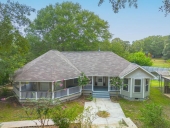
 4
4




West of Denver, Colorado @ 8,000'
Zone 4(ish)... Summers are still brutal!
 2
2




sow…reap…compost…repeat
 2
2




West of Denver, Colorado @ 8,000'
Zone 4(ish)... Summers are still brutal!




sow…reap…compost…repeat
 3
3




sow…reap…compost…repeat
 5
5




Country oriented nerd with primary interests in alternate energy in particular solar. Dabble in gardening, trees, cob, soil building and a host of others.
 2
2




 3
3




 2
2




 2
2




C. Letellier wrote:
Now one other catch on this is that you can warm the walls of the basement up nicely but making a real change in floor temperature is nearly impossible. I had counted on being able to warm both the walls and floor up to be my thermal "battery". The walls warm up nicely as expected. But even having gotten my intake down to a strip 1 inch high and 12 feet long I can't get the floor to change temperature much. 1 inch off the floor the temperature was 76 degrees but put the sensor down on the floor and it was 60 degrees this fall even after weeks of the basement climbing into the mid 70's every day for weeks. After a bunch of study I see it is a combination of stratification and boundary layer protecting it. Either I need to put heat under the floor or I need to physically scrub the air flow across it to see real change.

| I agree. Here's the link: http://stoves2.com |








